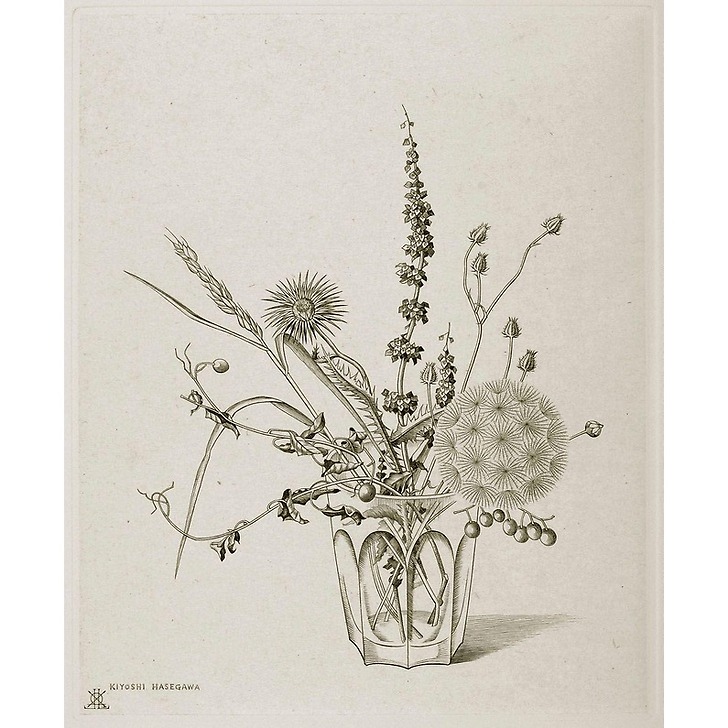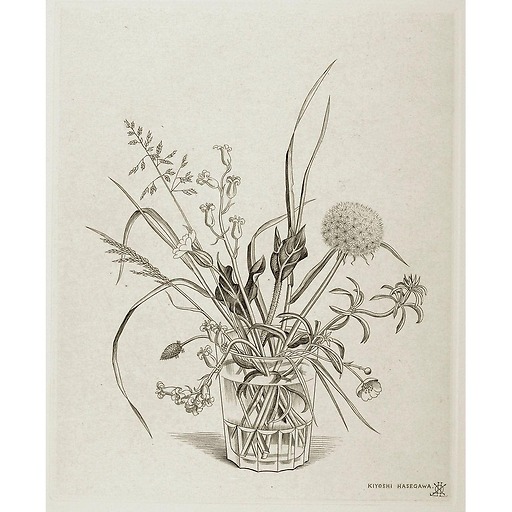Hasegawa engraved many such floral compositions: a few field flowers arranged in a simple glass of water. He made a pair of them for the Chalcographie of the Louvre: one illustrating Spring, the other Autumn. His favourite models are flowers, herbs, grasses; he likes to choose them simple, among the...
Read more
Hasegawa engraved many such floral compositions: a few field flowers arranged in a simple glass of water. He made a pair of them for the Chalcographie of the Louvre: one illustrating Spring, the other Autumn. His favourite models are flowers, herbs, grasses; he likes to choose them simple, among the flowers of the fields, for their pure charm, their freshness, their infinite variety. Under Hasegawa's chisel, they become elegant beauties.
Kiyoshi Hasegawa, painter and engraver, made his entire career in Paris from 1919, but still wanted to keep his Japanese nationality. Living in Montmartre, he was recognized by the public and the French artistic authorities of his time. On the other hand, Japan seems to have ignored his talent for too long because it was only a few months before his death in 1980 that the National Museum of Modern Art devoted a major retrospective to him. He based his reputation on his technical skills in black engraving. Hasegawa has listened throughout his life, the way of nature. He wanted to place his art in a very broad perspective, free of any constraints and free of any artistic current. This is how he was able to conquer his share of eternity.
Close






